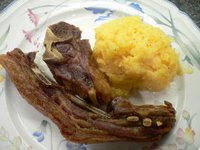
The differences in Christmas traditions between countries is quite fascinating. None more so than the differences between an English and Norwegian Christmas. Sad to say compared with Norway the traditions of an English Christmas for many folk have been hi-jacked by commercial interests. By comparison it is delightful to discover that for many Norwegians Christmas (Yule) still retains many of its traditions. As we discovered a couple of years back, two of the interesting traditions are, they celebrate Christmas on Christmas eve and eat strange alternatives to Turkey, but more of that in a moment.
For many Norwegians Christmas begins on 13th December, the shortest day of the year, with the celebration of Santa Lucia’s (St Lucy) Day. According to legend, Lucia was burned at the stake in Syracuse, because she refused to deny her Christian faith and marry a pagan. In her honour, a young girl, traditionally the youngest daughter from each family but elsewhere the blondest girl available, is dress in white robes and red sashes, and wearing a crown of greenery and long slender glowing candles. They may lead a procession round the house or carolers through the street, church or school. Lucy is the only saint celebrated by the Lutheran Swedes, Finns, Danes, and Norwegians, in celebrations that retain many pre-Christian elements of a midwinter light festival. The delightful practice of using candles and tea lights to light up the home, cafe and restaurant tables and bars, shop fronts and almost every where else you could put a candle is widespread.
In some areas it is traditional to cut your own Christmas tree, Surprisingly for a country covered in Christmas trees this is a tradition that was imported from Germany in the latter part of the nineteenth century. It can also happen in England but unfortunately it is often the one that someone has just erected in their own garden! The tree is not normally decorated until Christmas eve. The traditional decoration is small home made candles but the practice is now considered too dangerous.
Santa Claus (Julenisse), in Norway is a mix of the German St Nicholas and the Norwegian Nisse. Nisse was a mythical character who looked after the farmland and buildings. It was important to make sure he was rewarded for his duties by leaving out a bowl of porridge and a glass of beer in contrast to the English Santa Claus who prefers mince pie and glass of sherry or whiskey (In truth he would probably prefer a vindaloo or a kebab. Julenisse is helped by a team of mischievous elves who have taken over the name Nisse.
A still popular tradition, particularly with our grand daughter, is the baking of a wide variety of cakes and biscuits including julekake (with raisins), kryddekake, delfiakake, rosettbakels, fattigmann, smultringer, goro, silkekaker, pepperkaker, kokosmakroner and sand kager. Most of the biscuit recipes are not unlike ginger bread. If you are not up to making the spicy dough yourself you can buy it in the bakers or supermarket ready to roll out.
Of particular interest is the brewing of special Christmas beer, "Juleøl", There are over 50 varieties, one of my sons friends has produced the ultimate grown up Advent Calendar in which the daily surprise is a different "Juleøl" rather than a chocolate Santa Claus. The beer tends to be a bit like an English barley wine and can be as strong as 9% alcohol but the commercial varieties are not as strong being limited by law to less than 5% alcohol if they are to be sold in supermarkets.
For visitors to Norway the most curious Christmas tradition is their choice of food. Our traditional turkey is replaced by a variety of alternative the choice of which may depend on which part of the country you are in and whether you are in town or country. Our first Norwegian Christmas dinner comprised Lutefisk, mashed peas (mushy peas), rendered lardons (thick fatty smoked bacon), red potatoes boiled in their skins. The fat from the grilled bacon, is poured over the potatoes. Norwegians remove the skins before eating the potatoes but I like to leave them on. Despite the rather bizarre treatment of the fish I found Lutefisk to be delicious.  This was followed by "Pinnekjøtt" - salted lamb ribs, literally translated as "twig meat".
This was followed by "Pinnekjøtt" - salted lamb ribs, literally translated as "twig meat".
This was served with yellow turnip, we would call it swede but that is a bit non-pc in Norway, could be construed as cannibalism and more potatoes. All washed down with adequate quantities of Aquavit and "Juleøl".
Lutefisk [loo-te-fisk]- this is cod fish treated with wood ash or lye (which is essentially potassium chloride) during this treatment the fish swells and becomes like jelly, after which it is dried. Before it can be cooked it is soaked in repeated changes of water to remove the chemicals.
It is great to be in a country where the natives still uphold their traditions. No fear of the Norwegians changing the name of Christmas lights to Winter lights. Such has been the demand for traditional Christmas fare there is a danger that some seasonal delicacies may be in short supply.